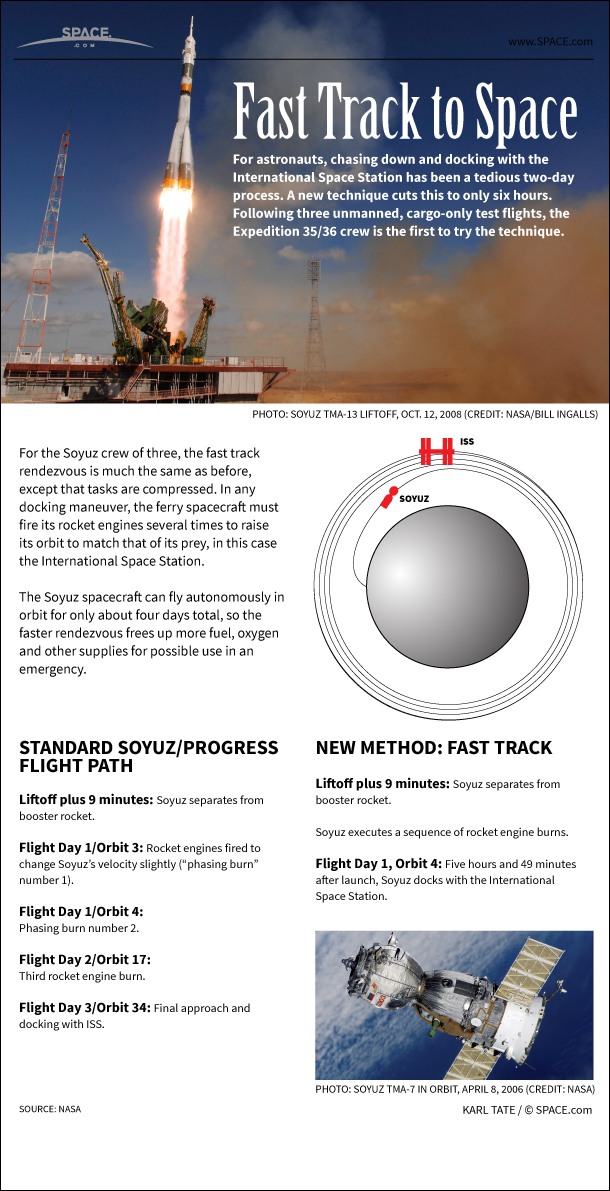Soyuz 'Fast Track': How 1-Day Space Station Trips Work (Infographic)

For astronauts, chasing down and docking with the International Space Station has been a tedious two-day process on Russia's Soyuz spacecraft. A new technique cuts this to only six hours. Following three unmanned, cargo-only test flights, the Expedition 35/36 crew is the first to try the technique.
For the Soyuz crew of three, the fast track rendezvous is much the same as before, except that tasks are compressed. In any docking maneuver, the ferry spacecraft must fire its rocket engines several times to raise its orbit to match that of its prey, in this case the International Space Station. [What It's Like to Ride a Soyuz (Video)]
The Soyuz spacecraft can fly autonomously in orbit for only about four days total, so the faster rendezvous frees up more fuel, oxygen and other supplies for possible use in an emergency.
STANDARD SOYUZ/PROGRESS FLIGHT PATH
Liftoff plus 9 minutes: Soyuz separates from booster rocket.
Flight Day 1/Orbit 3: Rocket engines fired to change Soyuz’s velocity slightly (“phasing burn” number 1).
Flight Day 1/Orbit 4: Phasing burn number 2.
Flight Day 2/Orbit 17: Third rocket engine burn.
Flight Day 3/Orbit 34: Final approach and docking with ISS.
NEW METHOD: FAST TRACK
Liftoff plus 9 minutes: Soyuz separates from booster rocket.
Soyuz executes a sequence of rocket engine burns.
Flight Day 1, Orbit 4: Five hours and 49 minutes after launch, Soyuz docks with the International Space Station.
- Photo Gallery: Soyuz Rolls Out for 1-Day Launch to Space Station
- Soyuz Spacecraft Explained (Infographic)
- Quiz: The Reality of Life in Orbit
Follow us @Spacedotcom, Facebook and Google+.
Join our Space Forums to keep talking space on the latest missions, night sky and more! And if you have a news tip, correction or comment, let us know at: community@space.com.
Get the Space.com Newsletter
Breaking space news, the latest updates on rocket launches, skywatching events and more!

Karl's association with Space.com goes back to 2000, when he was hired to produce interactive Flash graphics. From 2010 to 2016, Karl worked as an infographics specialist across all editorial properties of Purch (formerly known as TechMediaNetwork). Before joining Space.com, Karl spent 11 years at the New York headquarters of The Associated Press, creating news graphics for use around the world in newspapers and on the web. He has a degree in graphic design from Louisiana State University and now works as a freelance graphic designer in New York City.
